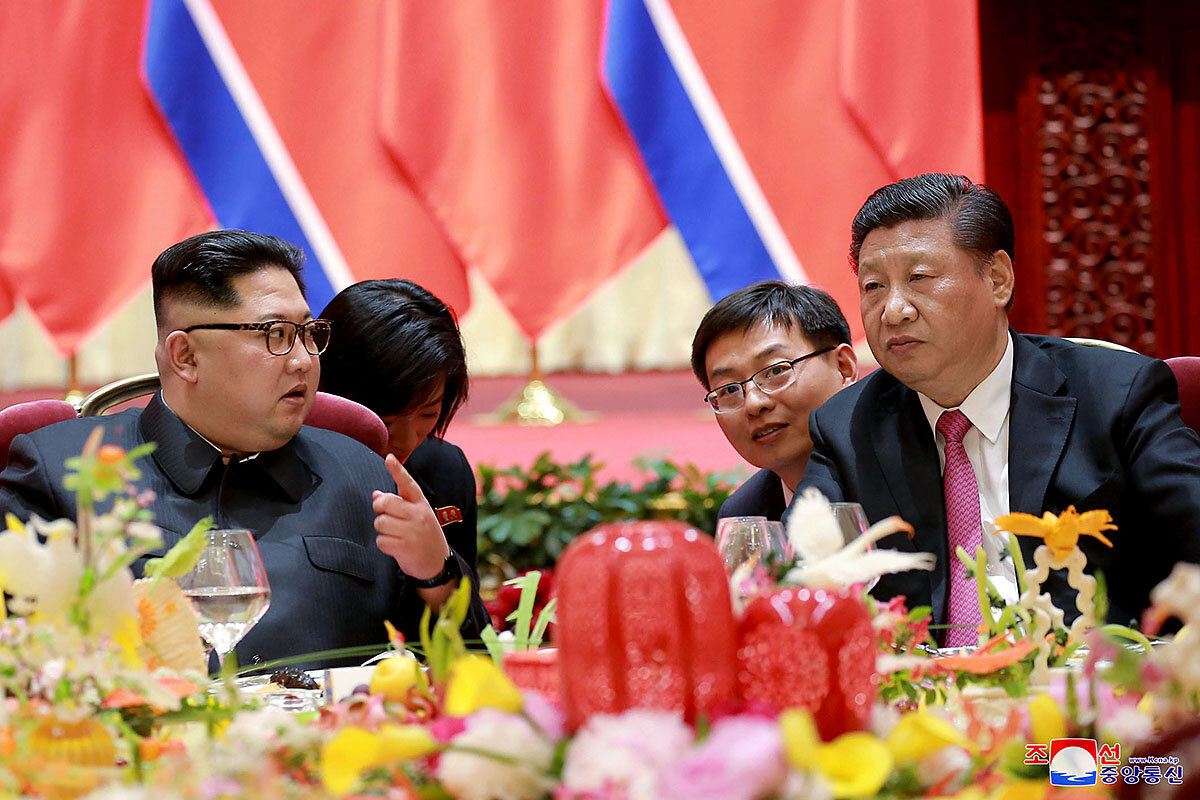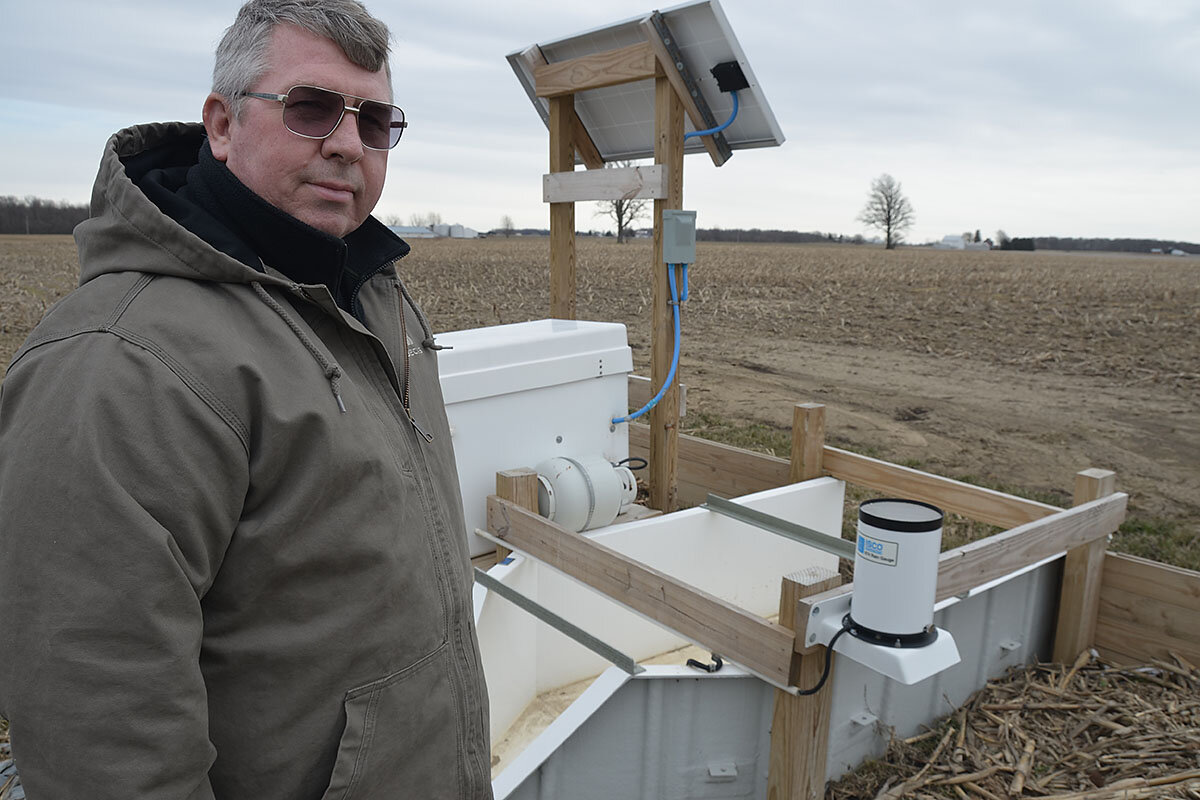In North Korea talks, what role is China seeking?
When President Trump last week dubbed Chinese President Xi Jinping a “world-class poker player” for his diplomatic prowess in handling the tricky North Korea challenge, it raised eyebrows in Beijing and left US-China watchers perplexed.
Mr. Trump, in comments during his May 22 White House meeting with South Korean President Moon Jae-in, referred specifically to North Korea’s “change in attitude” after North Korean leader Kim Jong-un’s recent second meeting with Mr. Xi in just over a month.
It was the North’s hardened position that prompted Trump to cancel a proposed June 12 summit between him and Mr. Kim.
Was Trump warning the Chinese leader through feigned admiration, some analysts wondered, that he was pushing Mr. Kim too far into a position that risked scuttling the advancing diplomacy between the United States and North Korea?
Or, as others wondered, did the reference to master poker-playing signal Trump’s recognition that China’s Xi was cleverly playing all the cards in his hand, from North Korea and US-China trade issues to great-power relations?
Whatever Trump meant to suggest, the reference reflected two realities: first, that China will play a determinant role in the off-again, on-again diplomacy between the US and North Korea over Pyongyang’s nuclear program. And second, that no matter how Trump’s gambit with China’s rogue neighbor works out, relations between the world’s sole superpower and the rising challenger will remain the over-arching game of the century requiring master skills.
“Remember that when Trump came into office, it was great-power competition – with Russia and China but mostly with China – that was going to be the priority and that was the focus of every national security document the new administration put out,” says Harry Kazianis, director of defense studies and a Northeast Asia expert at the Center for the National Interest in Washington.
“That got put on the back burner as North Korea rose as the top national-security concern, but it’s never pushed too far back. And I can tell you,” he adds, “that there are some senior White House officials and senior State Department officials who would love an excuse to move ahead with a full-blown containment strategy on China.”
Clearly North Korea diplomacy and the prospects for reviving the canceled Trump-Kim summit remain front and center, as events over the weekend and Tuesday demonstrate.
Trump announced in a tweet Tuesday that a senior North Korean official, Kim Young Chol, was on his way to New York for meetings with US officials. Secretary of State Mike Pompeo is slated to meet with Mr. Kim this week.
Moreover, the dispatching of one US diplomatic team to Singapore, where the June 12 summit was scheduled to take place, and another to the North Korean side of the Korean Peninsula’s demilitarized zone for meetings Tuesday with senior North Korean officials, underscored the intensive efforts under way to put the summit back on track.
But the kind of strategic card-playing Trump attributed to China’s Xi was also evident in Washington.
On Tuesday, Trump announced plans to impose tariffs on $50 billion in Chinese imports and to introduce a raft of new limitations on Chinese investment in the US high-tech industry.
Trump did not commingle the China trade issues with the North Korea diplomatic efforts in his tweets, but the president has openly related the two issues, some US-China experts note.
“Let’s not forget that it’s been President Trump who’s linked trade issues and addressing North Korea’s nuclear program in the past,” says Bonnie Glaser, a senior adviser for Asia at the Center for Strategic and International Studies in Washington. It was Trump who said during his trip to Beijing in April “that if China helps us with North Korea, he’d be willing to give China a better deal on trade,” she says. “That has given the Chinese tremendous leverage.”
Ms. Glaser says she was “baffled” by Trump’s “poker player” reference to Xi, and to the implication many took from it that the US was blaming China for North Korea’s hardening stance on nuclear negotiations.
“There’s something going on that prompted the president to say this but that we’re not hearing,” says Glaser, who says “past experience shows President Trump usually makes these bizarre comments based on something he’s heard in an intelligence briefing. But what I can say from my observation,” she adds, “is that the Chinese have no interest in sabotaging the summit with Kim Jong-un.”
Other analysts in Washington and in Beijing seem to agree.
“China has a strategic interest in securing a positive outcome of the summit,” says Zhao Tong, a North Korea expert at the Carnegie-Tsinghua Center for Global Policy in Beijing.
Kim’s opening to the US shows he wants to “start a long-term transition from a pariah state” to a modern state with a globally connected economy, “and for China, that’s a very important strategic goal to achieve,” Mr. Tong says. “If the summit fails, if the US tries to strengthen … the maximum-pressure campaign,” he adds, “China will be placed in a very uncomfortable place.”
Still, while that may be true, others see reasons Xi might have aimed to influence Kim short of causing a total Washington-Beijing rupture.
“It’s quite imaginable that Xi could have told Kim Jong-un, ‘Hey, slow down, what’s the rush,’ ” says Joseph Yun, a former State Department special representative for North Korea policy with decades of experience in the China and North Korea portfolios. Kim’s two visits to China in just over a month “reflect a caution and unease the Chinese were feeling over the rapidly progressing diplomacy,” says Ambassador Yun, now a North Korea expert at the US Institute of Peace in Washington.
Indeed, China very likely saw as twin worries the building rapprochement between Washington and Pyongyang even as Washington-Seoul ties sailed on smoothly.
“I think Xi took it as a slap in the face when Kim Jong-un unilaterally stopped nuclear testing even as he dropped his insistence on an end to US-South Korean military exercises,” says Glaser. “What Xi does have very high on his agenda is driving a wedge between the US and Seoul and undermining the alliance.”
Seconding the theory that Xi may be out to slow but not scuttle US-North Korea diplomacy is Mr. Kazianis of the National Interest, who says the Chinese have liked nothing better than to see Washington “bogged down” with the North Korea issue. “For them, what’s not to like? Among other things they’ve been able to run the table in the South China Sea,” he says, pointing to Beijing’s military build-up in neighboring waters as the Trump administration has focused on the North Asian nuclear threat.
Kazianis says no one should rule out “some connection” between China’s ongoing trade negotiations with the US and Kim’s abruptly toughened stance toward the US after his second meeting in 40 days with Xi. Indeed, Trump’s own reference broadly to such a connection and specifically his surprising softening of US penalties on Chinese telecom company ZTE (sanctioned heavily by the US for doing business with both North Korea and Iran) suggest Xi might indeed be angling to play several cards at once.
But at the same time, he says China is at risk of running afoul of administration officials who are itching to get back to tough action with China and who have no qualms about the prospects of a trade war.
“If the game [the Chinese] are playing is to bring Kim Jong-un to the table in exchange for trade concessions, they’re opening up a Pandora’s box,” Kazianis says. “They should remember that the China hawks are waiting and ready to take off.”
That may be, but at the same time some analysts say they still see Xi and China coming out ahead if the outcome of the current theatrics of US-North Korea diplomacy is a solid nuclear deal that China helped facilitate.
“No one can predict where all this is going, but I think you’d have to say that given everything, China is in a pretty good position right now,” says Glaser. “Xi has just had two summits with North Korea, relations with South Korea are improving, and at least right now the picture on US-China trade isn’t as bad as it might have been. So unless it turns out Xi really is in the president’s crosshairs,” she adds, “I’d say things are going pretty well for China right now.”
Michael Holtz contributed from Beijing.

















